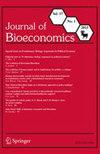相对财富的增长和凯利标准
Q3 Social Sciences
引用次数: 25
摘要
我们提出了一个最优投资组合增长理论的进化框架,在该框架中,受环境压力影响的投资者在两种资产之间分配财富。通过考虑投资者之间的绝对财富和相对财富,我们发现不同的投资者行为在不同的环境中生存。当投资者的相对财富最大化时,只有在确定的特定条件下,Kelly准则才是最优的。初始相对财富在确定最优行为偏离凯利准则方面发挥着关键作用,无论投资者是在单个时间段内短视还是在无限范围内最大化财富。我们将这些结果与群体遗传学联系起来,并使用实验进化来讨论这些发现的可测试结果。本文章由计算机程序翻译,如有差异,请以英文原文为准。
The growth of relative wealth and the Kelly criterion
We propose an evolutionary framework for optimal portfolio growth theory in which investors subject to environmental pressures allocate their wealth between two assets. By considering both absolute wealth and relative wealth between investors, we show that different investor behaviors survive in different environments. When investors maximize their relative wealth, the Kelly criterion is optimal only under certain conditions, which are identified. The initial relative wealth plays a critical role in determining the deviation of optimal behavior from the Kelly criterion regardless of whether the investor is myopic across a single time period or maximizing wealth over an infinite horizon. We relate these results to population genetics, and discuss testable consequences of these findings using experimental evolution.
求助全文
通过发布文献求助,成功后即可免费获取论文全文。
去求助
来源期刊

Journal of Bioeconomics
Social Sciences-Geography, Planning and Development
CiteScore
3.70
自引率
0.00%
发文量
7
期刊介绍:
The Journal of Bioeconomics is devoted to creative interdisciplinary dialogues between biologists and economists. It promotes the mutual exchange of theories, methods, and data where biology can help explaining economic behavior and the nature of the human economy; and where economics is conducive to understanding the economy of nature. The Journal invites contributions relevant to the bioeconomic agenda from economic fields such as behavioral economics, biometric studies, neuroeconomics, consumer studies, ecological economics, evolutionary economics, evolutionary game theory, political economy, and ethnicity studies. From biology, the Journal welcomes contributions from, among others, evolutionary biology, systematic biology, behavioral ecology, ethology, paleobiology, and sociobiology. The scholarly discussion also covers selected topics from behavioral sciences, cognitive science, evolutionary anthropology, evolutionary psychology, epistemology, and ethics. Officially cited as: J Bioecon
 求助内容:
求助内容: 应助结果提醒方式:
应助结果提醒方式:


